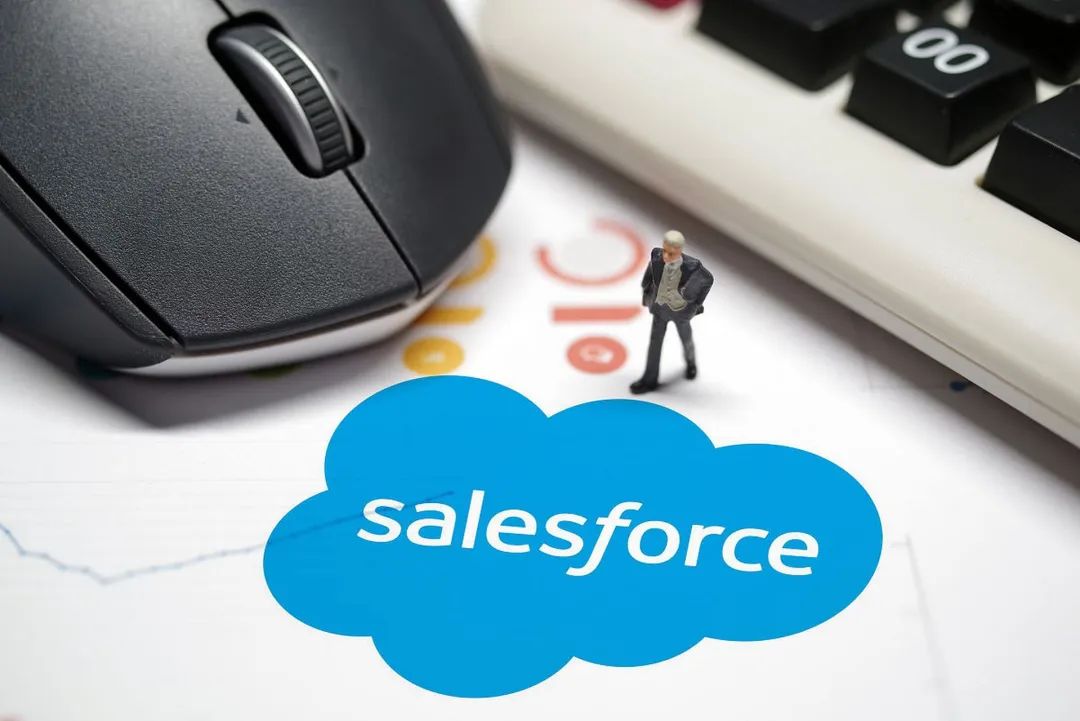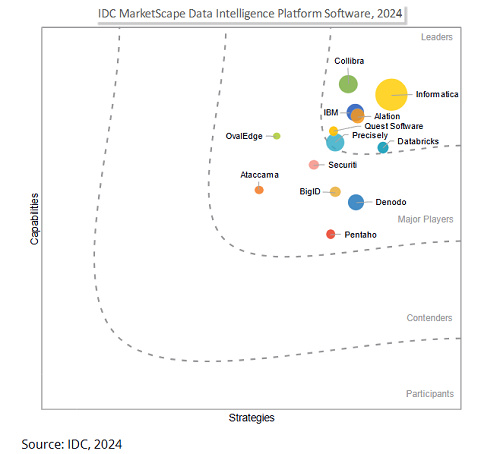Behind Salesforce's Acquisition of Informatica: Data Governance as a Strategic Advantage for Agent Service Providers
![]() 06/19 2025
06/19 2025
![]() 493
493

In the age of AI-powered SaaS software, data governance has transcended its auxiliary role to become a "platform core," alongside workflow orchestration and permission systems. Salesforce's acquisition of Informatica is not merely a tactical move but a structural enhancement of its SaaS platform capabilities. Future competition will hinge on deeply embedding AI into enterprise operational logic to build "trustworthy, controllable, and sustainable" intelligent systems, rather than comparing individual AI functions.
Author | DouDou
Editor | Piye
Produced by | Industrialist
Amid the wave of AI-induced enterprise-level revolution, Salesforce has struck again.
At the end of May 2025, Silicon Valley witnessed a monumental deal: Salesforce, the enterprise software giant, officially announced its acquisition of the data management platform Informatica for approximately $8 billion.
This merger and acquisition didn't involve flashy internet celebrities or grandiose stunts, nor did it leverage the buzzword "AI content." However, it struck a chord with many seasoned software professionals. It signifies not just a business maneuver among enterprise software players but a profound shift in infrastructure logic: data governance is now front and center.
With "AI-native tools" like ChatGPT, Agent, and Copilot becoming industry standards, the core issue for enterprise software companies is no longer whether to adopt AI but whether they possess the qualifications to do so. These qualifications are increasingly determined by data capabilities. Models are gradually evolving into general assets, and what truly determines the effectiveness of AI application implementation is the governability, security, and consistency of data. These constitute the "foundation" supporting intelligent systems.
Salesforce's deal sends a clear signal: AI competition has entered the data war stage, and data governance is not an option but a decisive threshold.
By integrating Informatica, Salesforce opens up imaginative possibilities about how to organize AI to penetrate the core processes of enterprises.
Within 24 hours of the acquisition announcement, Informatica's share price surged by 11%, while Salesforce's share price remained almost unchanged. The market's reaction is thought-provoking, recognizing the value of data governance on one hand and reflecting cautious optimism about Salesforce's M&A integration capabilities on the other: Is the strategy of constant "buying" strategic synergy or complexity overlay?
I. Why Informatica?
Informatica's presence is far less than its value.
In the public eye, it rarely trends. However, as one of the earliest global vendors in data integration and governance, Informatica pioneered commercial ETL tools in the 1990s and gradually expanded to core modules such as master data management (MDM), data catalog, data quality control, metadata analysis, and data security, becoming a fundamental component of large and medium-sized enterprise data architectures.
Informatica is a typical "mission-critical" software. Its revenue doesn't rely on blockbuster growth but on renewals and stable expansions, with many customers using it for over a decade. When Informatica re-listed in 2021, it wasn't particularly favored by Wall Street, with the market concerned about its "age" and "slow transformation." However, it proved with facts that enterprise-level data services don't need to be "trendy" but "stable".

For instance, a major American insurance company used Informatica to govern customer data across 14 different business units. Through automated data mapping and lineage analysis, the company reduced customer duplication by 38% and improved claims processing efficiency by over 60%. These improvements didn't stem from "new technology" but from the previously overlooked integration of data foundations.
From a product strategy perspective, Informatica's core advantage isn't a single-point capability but its comprehensive, deep, and highly configurable governance capabilities—it can provide enterprises with a unified "data lineage map" driven by metadata. In today's context of dispersed data sources, diverse types, and stricter regulations, this capability becomes increasingly irreplaceable.
Salesforce needs Informatica precisely because its AI strategy is entering the implementation stage—from being "model-first" in the past to being "safe and affordable to use" today. The concept of Agentforce (a core new platform in Salesforce's AI strategy, first introduced at its Dreamforce conference in 2024, is an "intelligent agent platform" for enterprise users. Its essence is to deeply integrate generative AI with Salesforce's various product systems, allowing AI to participate in specific tasks as an "assistant" or "agent" in the daily operations of enterprises) essentially aims to integrate AI into business collaboration rather than as an independent tool. This requires models to understand context, access historical data, automatically handle data access permissions, etc., which Salesforce's existing Data Cloud (formerly known as Salesforce Customer Data Platform, Salesforce's data platform for building a unified customer view) and Tableau (a data visualization platform acquired by Salesforce for $15.7 billion in 2019, one of the world's most renowned business intelligence (BI) tools) cannot achieve alone.
As Salesforce CEO Marc Benioff stated, "In the era of artificial intelligence, the real challenge is not how to build models but whether you can make customers trust them. Informatica can help us build an 'enterprise intelligence data moat,' so that every intelligent decision is supported by credible data."
From this perspective, this is also a key signal of the transformation of traditional "front-office software companies" into "infrastructure platform companies".
In fact, Salesforce has made corresponding adjustments to its organizational structure since 2023: its AI and data platform departments were independently established from the product department for the first time, with the establishment of an "AI Platform Governance Center" dedicated to advancing Agentforce's data security governance solutions. This move itself reflects a shift in the company's strategic focus from interface interaction to data middleware and governance capabilities.
In AI-driven new enterprise systems, what truly determines system capabilities is no longer the front-end application interface but whether the enterprise possesses a set of credible, controllable, and scalable data governance capabilities—which is precisely Informatica's core strength.
II. Salesforce's Agent Anxiety and Closed Loop: From "Front-End Capabilities" to "Data Dams"
Understanding Informatica's value makes the underlying anxiety behind Salesforce's transaction increasingly prominent—it not only needs to make up for technological shortcomings but is also making strategic adjustments for the future of its platform.
Salesforce is no stranger to M&A activities. Past acquisitions of Tableau and Slack, although driving short-term revenue growth, have also exposed challenges in market integration feedback.
For example, according to the fiscal 2023 financial report, Slack's user growth stabilized after the acquisition, failing to achieve the expected synergies; on the Tableau side, due to the lack of deep integration with the Salesforce CRM data platform, customer churn rates temporarily increased. This acquisition of Informatica is seen by the outside world as a key turning point for Salesforce from "expansion priority" to "architectural repair".
Over the past 20 years, it has started from the earliest CRM cloud services and gradually pieced together a set of enterprise "digital middleware" combinations through acquisitions of Mulesoft (integration), Tableau (visualization), Slack (collaboration), etc.
However, the problem is that it has never truly mastered the "water source" of data governance.
Data Cloud is more of a data lake-style aggregation system facing messy, scattered data without a unified lineage. In the past, when doing CRM or marketing automation, this wasn't a fatal issue, but when the system needs to generate "personalized recommendations," "AI summaries," and "cross-platform insights," the data source must be clear and credible.
Salesforce's AI plan, Agentforce, is built on the assumption of "generating real-time inference results from customer data." Without the support of a data infrastructure system, the accuracy, interpretability, and regulatory compliance of this system will face challenges.
Clara Shih, head of Salesforce AI, said, "Agentforce is a data-driven AI collaboration platform. We knew from the start that if data is not regulable, intelligence is not trustworthy. Informatica fills the most critical gap in our platform, enabling AI to truly 'understand the enterprise'."
The difficulty of integration cannot be ignored. In the late 2000s, SAP's acquisition of BusinessObjects was affected by slow integration processes, delaying new product launches and causing its BI market share to be temporarily overtaken by Tableau. If Salesforce wants to avoid repeating this mistake, it must deploy cross-platform metadata mapping strategies and unified interface specifications in advance.
Against the backdrop of increasingly stringent compliance regulations, Informatica's data access control and hierarchical permission system will also help Salesforce enhance the adaptability of its platform in multiple global markets. For example, Informatica already supports China's data export compliance API rule interfaces and has established an automated audit log system that interfaces with EU GDPR requirements. This will directly enhance Salesforce's application capabilities in complex compliance markets such as government, healthcare, and multinational enterprises.

In an employee letter, Jitesh Ghai, Chief Product Officer of Informatica, said, "We will continue to operate as an independent brand and assist more enterprises in completing the transformation from 'data chaos' to 'intelligent order.' Within the Salesforce ecosystem, we will be able to do far more than we have in the past."
The essence of this deal is Salesforce's bet on the "data autonomy" strategy. As AI increasingly becomes the core of enterprise automation, whoever masters the "credible data scheduling capability" will dominate the discourse power of future enterprise software platforms.
III. In the Era of AI Agents, What is the True Service Capability?
Further deducing from Salesforce's acquisition motive reveals that it is not facing an isolated case but a collective transformation experienced by the entire SaaS industry: AI is no longer an "add-on feature" but will penetrate into the underlying platform architecture, reshaping foundational systems such as data, permissions, and compliance.
Specifically, the development of AI models is experiencing two stages: The first stage is a competition of algorithms and computing power, emphasizing model accuracy and multimodal capabilities; the second stage is about deploying models into specific business processes to generate real ROI. This deployment capability has shifted from single-point invocation tools to the overall evolution of platform-based SaaS architectures.
Currently, the embedded application of AI in SaaS software is rapidly expanding, from customer service, financial analysis to process automation and predictive maintenance. However, as the scale of use expands, the problems faced by enterprises become more specific, i.e., not "how to invoke models" but "how to ensure that the platform can safely, compliantly, and continuously schedule data".
Most SaaS vendors face the following typical problems: duplicate master data, chaotic interfaces, inconsistent fields, and lack of permission hierarchy for sensitive data. In this situation, without a systematic governance mechanism, AI embedding can exacerbate information chaos and risk accumulation.
This phenomenon directly drives data governance tools from "supporting tools" to "platform foundational capabilities." According to a Gartner report, it is estimated that by 2026, over 70% of enterprise-level large model deployment projects will rely on independent data governance modules, with governance budgets accounting for more than 25% of enterprise AI investments.
This trend has been reflected in multiple SaaS vendors beyond Salesforce.
For example, SAP has strengthened data sovereignty and data lineage management in its BTP (a unified technical infrastructure provided by SAP to help enterprises connect data, develop applications, run AI, and optimize business processes); Workday has added AI usage permission partitioning and user-level data traceability functions to its VNDLY platform (a subsystem platform under Workday specifically for enterprises to manage temporary/contract/outsourced human resources); and after acquiring Cerner (a US-based healthcare information technology company specializing in providing electronic health records (EHR) systems and related data services to hospitals, clinics, and health systems), Oracle is also reshaping the trusted layer of its SaaS architecture with medical data governance as the entry point.
In a practice by a British bank, to deploy an LLM-based customer credit scoring system, the bank adopted Informatica's data catalog and audit system, ensuring the consistency of sources and traceability of usage of model training data, reducing the originally required eight-week regulatory audit to within three days.
These cases precisely reflect an inflection point in industry trends: in the past, enterprises focused on whether AI deployment could be achieved, but now, more technical decision-makers and business leaders are beginning to focus on controllability and sustainability after implementation.
As Amit Walia eloquently put it, "Data governance has never been merely a back-end engineering task for us; rather, it stands as a pivotal factor determining AI's ability to take center stage. Salesforce shares our profound appreciation for data's status as the bedrock of intelligence, fostering a genuine strategic alignment in our collaboration."
McKinsey's 2024 survey on enterprise AI applications reveals that over 68% of enterprises encounter significant hurdles in advancing AI projects, not due to the algorithm itself, but rather because of governance-related issues such as "the absence of a unified data standard," "chaotic data sources," and "unmanageable risks associated with sensitive data usage."
These challenges are not isolated incidents but rather structural obstacles faced by the entire SaaS industry.
Postscript:
The industry logic surrounding AI is undergoing a paradigm shift. It is transitioning from being merely a showpiece tool and experimental model to becoming the core of enterprise IT systems. This transformation necessitates heightened standards for the entire SaaS software industry. The traditional "application as a service" model is evolving into "platform as a service + intelligent capabilities," compelling software vendors to go beyond mere functionality and ensure transparency and compliance across data sourcing, usage, and governance.
Salesforce's acquisition of Informatica embodies a profound significance: it aims not only to bolster AI product capabilities but also to lay the groundwork for a future-proof "data foundation" for SaaS products. The scalable and secure implementation of AI in SaaS applications ultimately hinges on the robustness of the underlying data infrastructure.
In the new era of AI-driven SaaS software, data governance has transcended its role as an auxiliary function to become a "core platform," alongside workflow orchestration and permission systems. Informatica's integration is not a tactical maneuver but a strategic reinforcement of SaaS platform capabilities.
Future competitions will revolve not around the comparison of isolated AI functions but rather on who can seamlessly integrate AI into the operational fabric of enterprises, crafting a "trustworthy, controllable, and sustainable" intelligent system.







